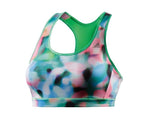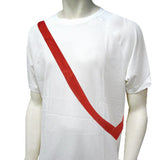MERCIAN
Mercian is hockey, it’s what we do.
Mercian Hockey has been testing, shaping and innovating since 1974. Following our intuition and our instinct. Bringing technology and insight together to make a difference.
From Simon, our former Olympian MD, to our UK head office, global agents, distributors and partners, we’re out there playing at every level.
Whether you are an elite player striving for the very highest accolade or just out for a Saturday afternoon knockaround, we get it, we care and we want to help you be your best. Mercian. Win before you play.
THERE IS NO SUCH THING AS LUCK.
JUST PREPARATION.
Mercian Hockey exists so that every player can believe in themselves. To take their game further. To achieve on every level. Mercian – Win before you play.
STICKS & GOALKEEPING
Weight Reduction
Composite material advances have resulted in enhanced strength in Mercian products. The use of aeronautical grade Carbon Fibre from British, continental European and Asian facilities means that the weight of our light sticks has been reduced with no compromise on hitting power, torsional strength or durability.
Fibreglass
The basic material used in hockey sticks is Fibreglass. Fibreglass is a strong lightweight material and is used for many products including sports equipment such as hockey sticks. Although it is not as strong and stiff as composites based on Carbon Fibre, it is less brittle, and its raw materials are much cheaper. Its bulk strength and weight are also better than many metals, and it can be more readily molded into complex shapes once impregnated with complex resins. This flexibility means that as a skeleton, a Fibreglass base resists some of the energy that can compromise the pure brittle nature of Carbon Fibre. It is why we (Mercian) believe that a 100% carbon stick is not the perfect performance solution.
Carbon Fibre
Anywhere where high performance is required Carbon Fibre's superior strength to weight ratio offers significant advantages, and sporting goods are no exception. It is used to replace or reduce metal, wood and steel content in a wide variety of sports applications. Carbon strands are made up of multiple filaments. 1K means 1000 filaments per strand. The greater the number of fibres the heavier the material. 1K Carbon is found in the electronics industry and used in military grade equipment. 3K and 6K are found in different types of sporting goods. 12K is usually considered too heavy for use in hockey sticks, further specifications exist but are increasingly heavy and not used in sports goods. Mercian uses Carbon from UK and European plants as well as the highly regarded Toray Carbon from Japan, the importation of such materials into Pakistan rather than using local materials increases the manufacturing cost but this is more than outweighed by the increase in the quality of the finished product.
Summary: Stiffness, durability, power, and very high strength to weight ratio allowing for a high performance light-weight hockey stick.
Aramid / Kevlar
Other materials such as aramid (Kevlar is a trademark of DuPont) can replace glass fibre and Carbon and enhance performance characteristics within a composite stick. It has superb impact absorption and durability so is perfect for using on high impact points such as stick edges and faces.
Summary: Light weight and has excellent anti abrasion and impact properties and is used on the heal of the hockey stick to prevent quick wear down from use. Aramide fibres in the shaft also enhance vibration dampening and enhance edge protection for backhand skill execution.
Basalt
Basalt fiber is a material made from extremely fine fibers of basalt, which is composed of the minerals plagioclase, pyroxene, and olivine. It is similar to carbon fiber and fiberglass, having better physicomechanical properties than fiberglass, but being significantly cheaper than carbon fiber.
Resins
Prior to hand-crafting and then ‘baking’ under heat and pressure, the raw materials are impregnated using complex resins. Standard commercial resins will form adequate bonds between the layers but for true high-quality performance multiple resins are blended to ensure the chemical properties of all the materials are considered and accounted for in the manufacturing process.
Lay-Up and Production Cycle
The quality of the raw materials is only one factor with respect to final product quality, resins also dictate the final product quality. However the nature of the lay-up – how the materials are placed on top of each other is just as important. The Mercian factory ensures that fibres are placed within layers at angles maximizing the performance characteristics of the materials and they are not too tightly layered to ensure that the resin impregnates all the fibres completely and the layers can bond totally. The pressure and temperature within the moulds is also tightly regulated to ensure an optimum production cycle.
High-Friction Finish
![]()
The Pro Line sticks feature a silicon based resin coating on the face of the sticks. Increased friction on the head of a stick, as seen on many of the leading brands products, enhances ball control and skill execution. On the Proline we have created that friction surface using silicon rather than silica. These tiny (black) rubber particles give a texture to the surface and whilst they also have the characteristics of rubber they can squash and at a microscopic level provide a degree of ‘damping’ and assist with stopping and ball control. The 100 series and 200 series create the same friction based coating but using silica, These transparent particles allow for the creation of a high friction surface but allowing the graphics on the heads of the sticks to remain visible to the end user.
Nano-Carbon Technology
Think small and strong. All composite sticks are made using a complex process of bonding materials together; the smaller the gaps between the materials in these bonds, the stronger the stick will be. Nano-Carbon Technology involves adding microscopic carbon straws to the bonding resins for the purpose of filling these tiny gaps which are otherwise filled only by resin. These hollow carbon straws within the resin provide multi-directional strength between the materials, with the result being a stronger and more resistant bond which increases the overall strength of the stick. Nano-Carbon Technology is used in all sticks with a carbon content.
Piezo-Electric Fibres (VRZ)
![]() Piezo-electric fibres in the VRZ ‘Vibration Reduction Zone’ on the Pro Line sticks are used to ‘harvest’ the vibrations created in these super-stiff sticks and turn them into heat. The result of this is efficient vibration dampening. The materials themselves have been known about since 1880; The Piezoelectric Effect is the ability of certain materials to generate an electric charge in response to applied mechanical stress. When piezoelectric material is placed under mechanical stress, a shifting of the positive and negative charge centers in the material takes place, which then results in an external electrical field. As a vibration damping material, the vibrations created from striking a ball create the ‘stress’ within the Piezo fibres and create an electrical charge (dispersed as heat).
Piezo-electric fibres in the VRZ ‘Vibration Reduction Zone’ on the Pro Line sticks are used to ‘harvest’ the vibrations created in these super-stiff sticks and turn them into heat. The result of this is efficient vibration dampening. The materials themselves have been known about since 1880; The Piezoelectric Effect is the ability of certain materials to generate an electric charge in response to applied mechanical stress. When piezoelectric material is placed under mechanical stress, a shifting of the positive and negative charge centers in the material takes place, which then results in an external electrical field. As a vibration damping material, the vibrations created from striking a ball create the ‘stress’ within the Piezo fibres and create an electrical charge (dispersed as heat).
GOALKEEPING TECH
The development and supply of goalkeeping equipment to the market has always been a Mercian Hockey priority. Using the current knowledge of 'keepers involved in International programmes and the long standing product knowledge of MD and ex-England and GB goalkeeper Simon Mason, Mercian are delighted to present their best and most complete collection of protective equipment ever. Suitable for the beginner or the elite player alike, Mercian are proud and pleased to offer, innovative, well priced, performance equipment for all levels of ‘keeper.
The basic foams used for the legguards, kickers and hand protectors in all the Mercian ranges are made in the UK and the products are manufactured in the UK.
The foam comes in 3 different categories and multiple densities, classified by weight. For example LD45 is a low density foam that weighs 45kg for a cubic metre. The heavier the weight, the higher the density, the higher the protection, but the lower the rebound. So, every range is analysed and the foams are combined to provide the required protection, weight and rebound. The make-up of a top pad could be an LD60 12mm skin to provide protection and 'slide' with a 33mm inner for protection and rebound, with a 24mm LD33 or MP(a different type of foam) liner to provide more protection and rebound but also comfort and fit.
Body armour and shorts use single and dual layer foams but with plastic plates to cover those foams and increase protection by spreading the force of the impact. It maximises the protective elements whilst minimising the weight. The coverings are designed to allow the materials to flex and move, enhancing mobility without compromising performance.
Fixing materials - elastics, nylon straps, belts and buckles are all used to ensure the protective elements cover the correct areas and don't move.
Our ranges are made using the technical knowledge that exists within our factories and the intimate understanding of goalkeeping possesed by both those manufacturers and the Mercian Hockey Team. The products are made in accordance with PPE legislation and CE directives.










